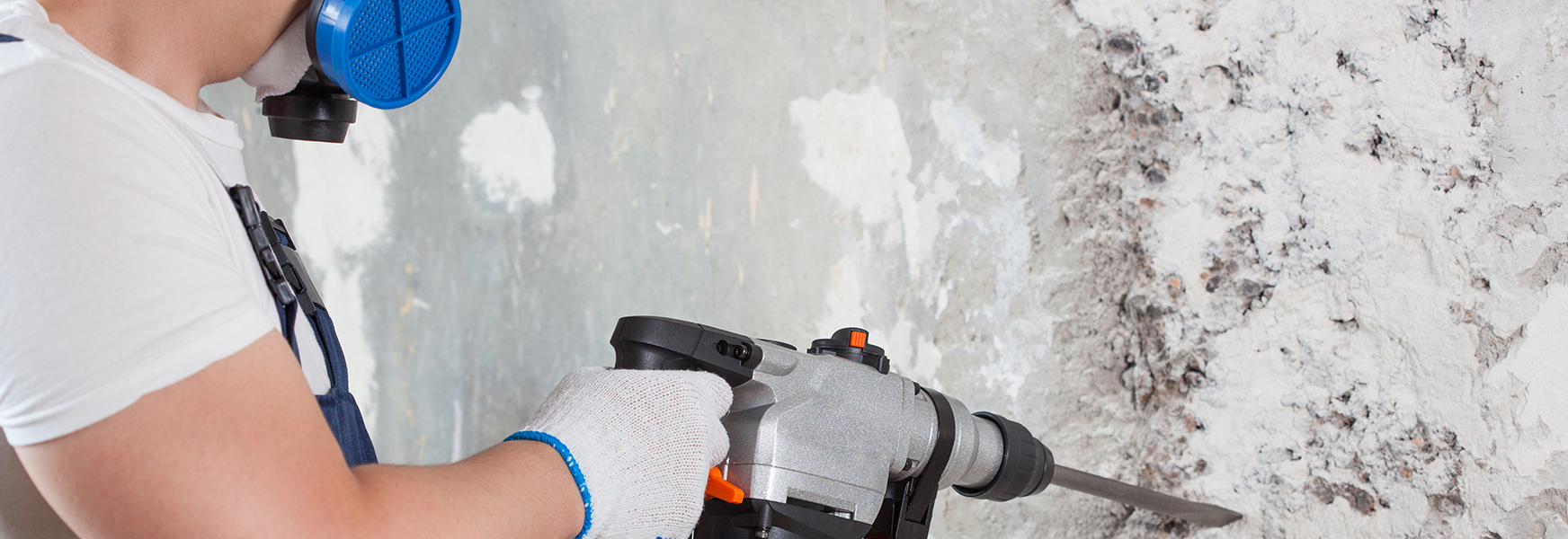The Impact of Crystalline Silica In Interior Wall Construction

The days of lath and plaster wall construction have pretty much been replaced with wallboard applied over stud walls of wood or steel. Old plaster typically contained horsehair and in some applications asbestos was used as a binder to ensure the plaster would hold. Today, drywall and joint compound are commonly used along with cement board as tile backing for its water resistance. While much safer than using asbestos-containing surfacing material, the use of modern wall system materials in construction bears its own inhalation exposure hazard – crystalline silica. Whether part of the composition or as an impurity, a look at a safety data sheet for drywall, joint compound, and cement board indicates up to 0.56% (in gypsum), <1.0%, and <0.7% crystalline silica by weight, respectively, for these building products. Therefore, when these construction materials are impacted upon creating airborne dust through sanding or grinding, OSHA’s respirable crystalline silica standard, 29 CFR 1926.1153, is invoked.
MEMIC has previously outlined the requirements of the respirable crystalline silica standard in the posts, Are You Ready for OSHA’s New Respirable Crystalline Silica Standard? (Parts 1-3) and OSHA Silica Regulations: Shifting Sands. Likewise, OSHA offers an abundance of information in their Safety and Health Topics section for crystalline silica. These resources are invaluable for not only those in the building trades but also for facility maintenance employees involved in wall system renovation or construction. For instance, a maintenance person grinding an edge of cement board to fit correctly within a shower stall or sanding joint compound on surrounding wallboard can be exposed and in violation of the respirable crystalline silica standard if engineering controls and respiratory protection are not employed. But that’s not the only OSHA standard that may be cited against the employer in this bathroom remodeling scenario.
Without performing personal exposure monitoring to assess levels of respirable crystalline silica, employers are required to adhere to the requirements specified in Table 1 of the applicable construction industry standard. These requirements include engineering controls, work practices, and respiratory protection. Additionally, employee training is required on the hazards of crystalline silica along with the development of an exposure control plan (ECP) with a competent person designated to make frequent jobsite inspections and ensure implementation of the ECP. These requirements incorporate the following OSHA standards in addition to the provisions of the respirable crystalline silica standard.
- Respiratory Protection, 29 CFR 1910.134, for need of a program with a written plan, medical evaluation for respirator use, fit testing of tight fitting respirators, and respirator training.
- Hazard Communication, 29 CFR 1910.1200, for need of a written program, employee information and training including sections of a safety data sheet, pictograms, and hazards of silica.
- Personal Protective Equipment, 29 CFR 1910.132, for need of a hazard assessment to determine the use of appropriate personal protective equipment.
OSHA regards the type of violation for the specific requirements of these standards as either Serious or Other-Than-Serious with the majority being of the serious type. The maximum penalty amount for a serious violation is now $13,494.00 per violation. Clearly then, what may appear to be a relatively simple and straightforward interior wall renovation, construction, or demolition project can become a costly venture from the standpoint of regulatory non-compliance due to the presence of crystalline silica even in small amounts. So, if it’s silica (of the crystalline form), it’s not just dust.
For more information on OSHA related requirements, check out these MEMIC Safety Net blogs.

